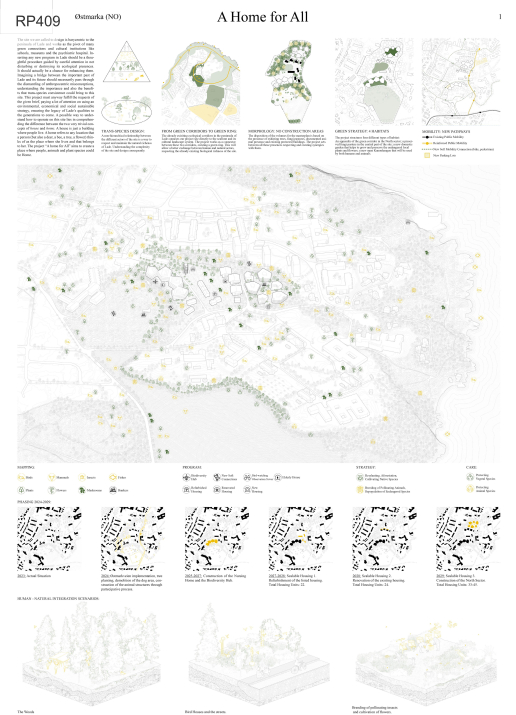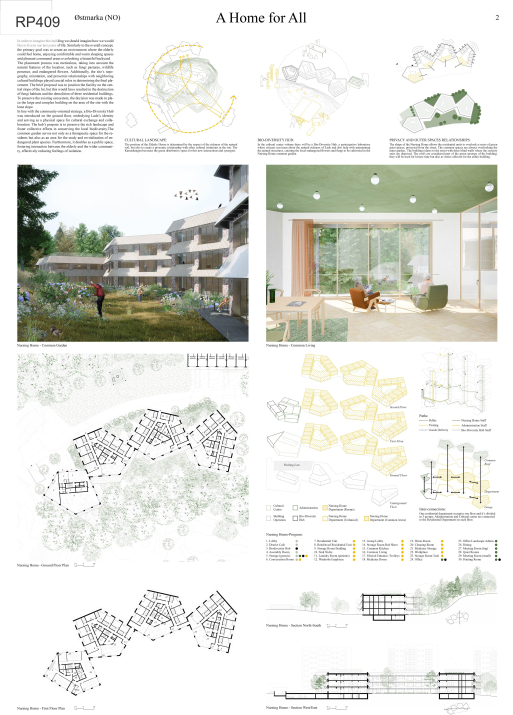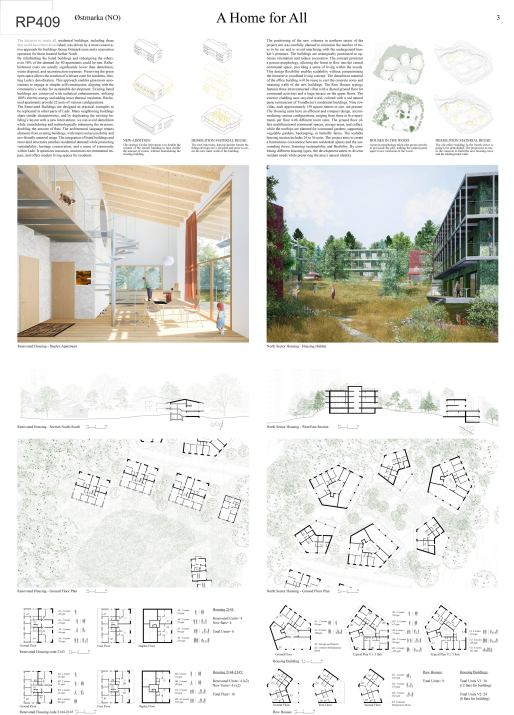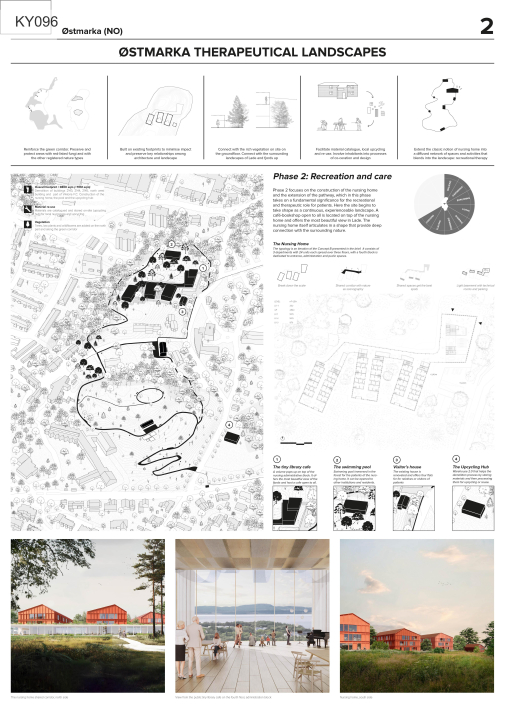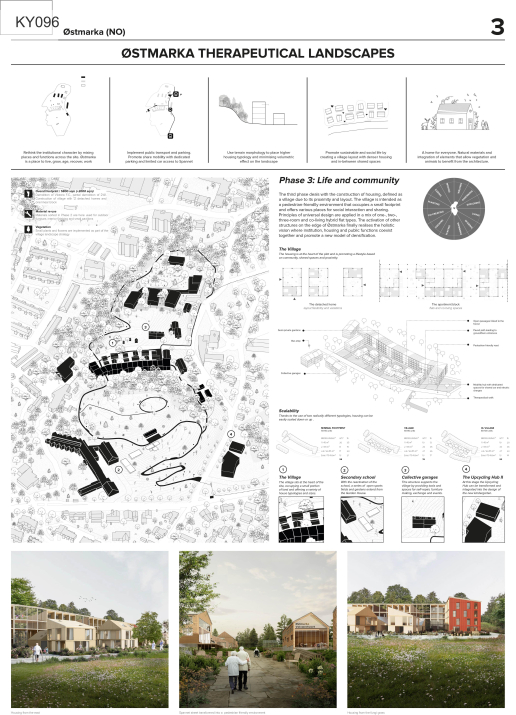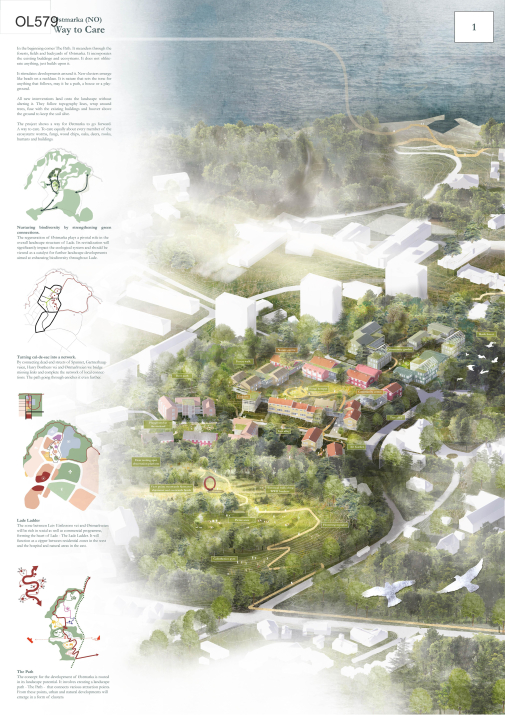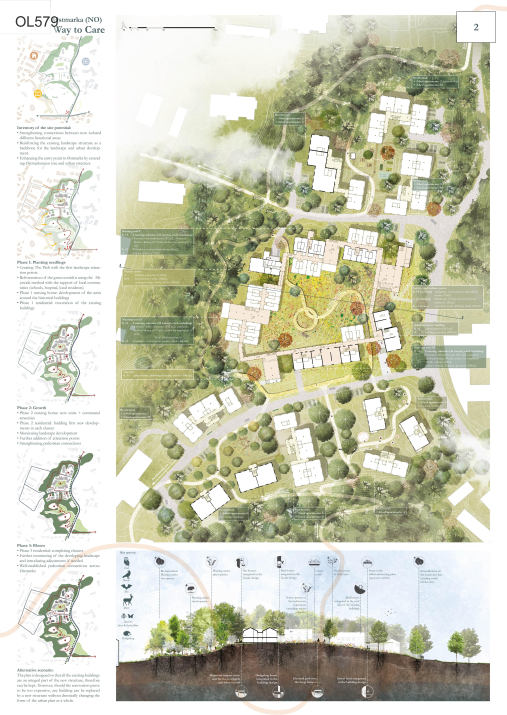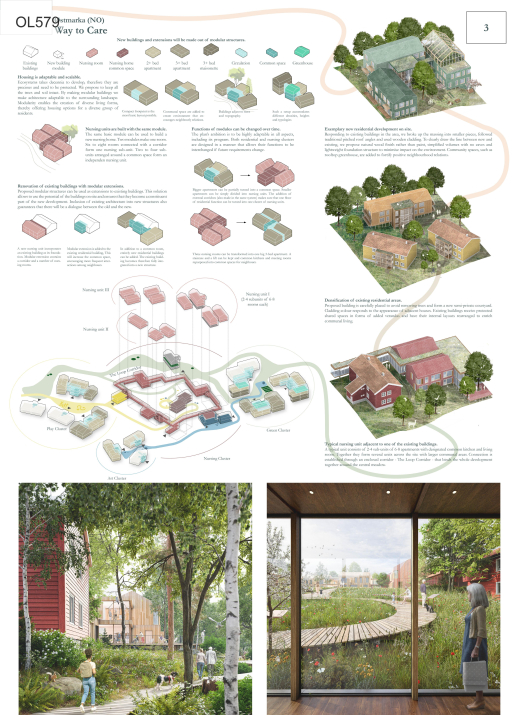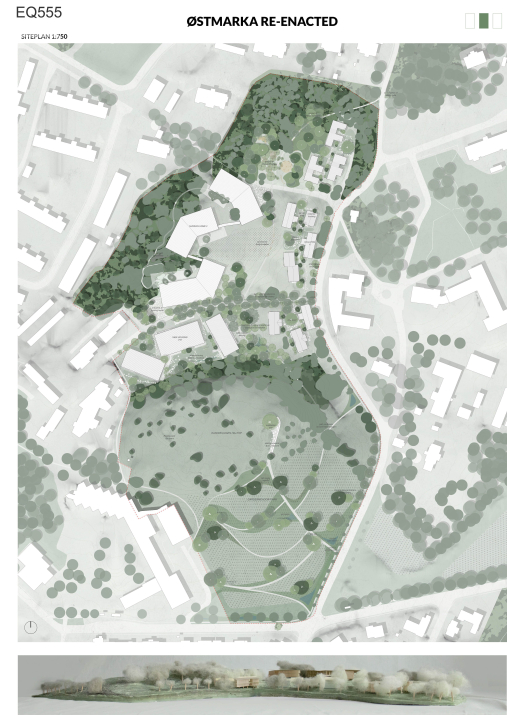Check out the results of E17 in Østmarka
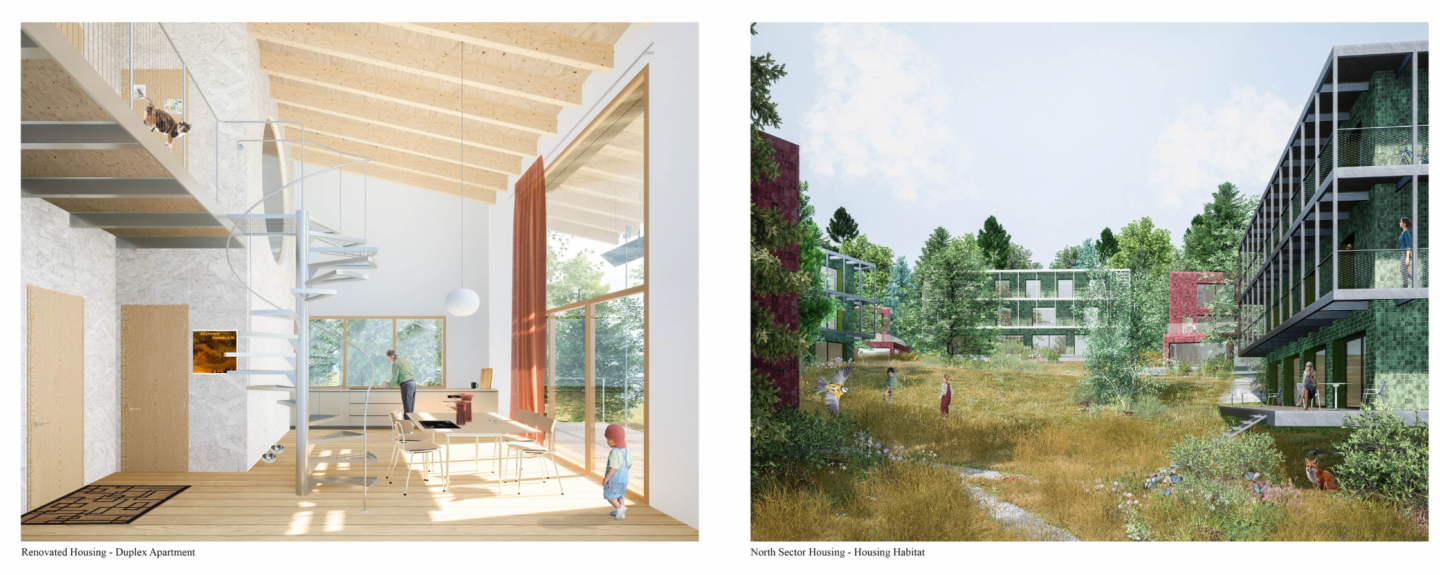
"A home for all" by won the competition for Østmarka
General Remarks by the jury
The challenge was to develop an area which has strong ecological values as well as a beautiful natural setting for a sensitive urban refill with a nursing home and housing. Competitors were free to challenge and adopt the questions set by the organisers, which some of the proposals decided to do.
The jury was content to see both very strategic as well as tactical proposals. The strongest proposals had done a thorough analysis of the site and programs and had managed to answer both urban strategy and tactics successfully. The jury sees the need for both in all the further discussions with stakeholders and the development process of Østmarka.
Østmarka has a strong topography, which underlines the separations of Kanonhaugen from the northern part of the site. Yet, Kanonhaugen is the visually dominating part of the area and its entrance view. The winning entry ‘Home for All’ had studied the physical qualities more than most others. The varying topography of the site had been taken as a cornerstone of the proposal. At best, the nursing home typology follows the topography or takes advantage of the views of the landscape, and the scale of housing adjusts to the height differences.
From an ecological point of view, the strongest proposals had created or kept the existing North-South connection and connected it with the fungi area and Kanonhaugen. Many successful proposals improved pedestrian routes through the area to connect it to its surroundings and offer better quality recreation to all the inhabitants of the greater area.
In most proposals, buildings were subordinate to the landscape and they seeked to blend with it, which seems appropriate in this site that has cultural heritage qualities. The housing solutions varied from those which hardly kept any of the existing buildings to those which tried to carefully preserve them all and even combine them into new structures. The jury was content to see innovative studies of scalable housing, especially in the strongest proposals. Placing housing straight on the northern hillside of Kanonhauden raised questions about sufficient daylight, but that location proved an interesting option for the nursing home. Positioned between the school, the daycare centre and the hospitals to the west, the nursing home completes a chain of public buildings thus strengthening a kind of public core of the site.
The jury was happy to see a vast variety of nursing home typologies with an innovative approach. Unfortunately, some of those studies were not functional enough. Nevertheless, they proved the potential of the site for such use. The winning entry’s nursing home was seen as both functioning and architecturally beautiful in its design.
Download the full report for feedback on all projects
Team
Marini Michele (IT), architect
Pedrotti Lemuel (IT), student in architecture
Gobbi Enrico (IT), student in architecture
Calzolari Francesca (IT), environmentalist
Jury remarks
A home for all successfully integrates both a nursing home and the necessary housing units into the site with a subtle yet distinctive touch. This gentleness is exemplified in the visually stunning graphic presentations, inviting a closer examination to appreciate all the project's qualities. Through a ‘green ring’, the project links the site to the existing green corridors of the Lade peninsula stretching inwards from the coast. They build a successful overarching green strategy of living with other species that is implemented at both the neighbourhood and architectural scales. There is a clear strategy on where on the site there is room for building new, how and why the existing building mass is kept, and where large green areas are left untouched. The project successfully collects programs in denser points in order to leave other parts untouched for the sake of the other species with which we share this site. The nursing home is placed as a series of linked pentagonal shaped buildings along the northside of the steep slope from Kanonhaugen, thus creating a protected green area south of the buildings for the fragile inhabitants. The pentagonal shape of the building creates a subtle but distinct character to the nursing home, resulting in a strong identity.
Team:
Alberto Roncelli (DK), architect
Nicole Vettore (IT), architect
Nathan Baudoin (FR), architect
albertoroncelli1@gmail.com
Jury remarks:
Therapeutical landscapes introduces a subtle approach towards the landscape and the site with a clear phasing strategy, capitalising on the existing qualities by making them accessible.
The initial step starts with a lighter touch, featuring an elevated pathway that gracefully traverses the landscape, accompanied by smaller assisting structures. This pathway opens up Kanonhaugen’s natural habitat making it accessible while preserving other areas in their natural state.
The project represents a clear strategy for existing buildings: start using them as is, as soon as possible! Some buildings are introduced in the first phase, followed by others in the second. In the latter, the team introduces the idea of reusing the foundations for the nursing homes, resulting in a cluster of interconnected buildings. The jury found this approach more compelling in terms of climate considerations than purely functional or architectural aspects.
The third phase introduces a cluster of buildings: the village. This was one of the few proposals suggesting a somewhat larger scale to a housing complex, which the jury appreciated. However, concerns remain about the assumed flexibility and the location's shadowed position beneath Kanonhaugen.
Therapeutical landscapes is formulated through a strong narrative, which underlines its processual character and shows robust strategy marked by intelligence and potential. The project focuses on densifying in specific areas and preserving and repurposing not only the buildings on site, but also the school. It showcases a commitment to allowing nature to shine and be accessible, and the approach to the southern part of the site could seamlessly complement the winning proposal.
Team:
Ada Jaskowiec (PL), architect urbanist
Michal Stupinski (PL), architect
Kinga Murawska (PL), urban planner
Zuzanna Sekula (PL), landscape architect
Jury Remarks:
The project receives a special mention for a process-oriented approach to working with landscape and building on it gradually and minimally. The project does all it can to disturb the soil as little as possible. With these principles, Way to care sketches out ideas for how humans build and live among other species. The proposal goes beyond the competition brief for Østmarka and right to the heart of the Europan17 theme.
Team:
Marta Lata (PL), architect
Sarita Poptani (FI), landscape architect
Gudni Asgeirsson (IS), landscape architect
Mateusz Pietryga (PL), architect
Jury remarks:
Østmarka reenacted lets the existing landscape of Østmarka dictate the layout of buildings. The goal is a coexistence with nature, balanced with the need for housing and a nursing home.
The buildings are placed at the edge of the site, framing an open north-south landscape-room. This is the only project that places the buildings on the edges of the site. The jury appreciates the project's approach to the landscape and the proposed directions and structure of the proposal.
Additionally, the jury highlights the good analysis and the sympathetic presentation- technique showcased in Østmarka reenacted.
